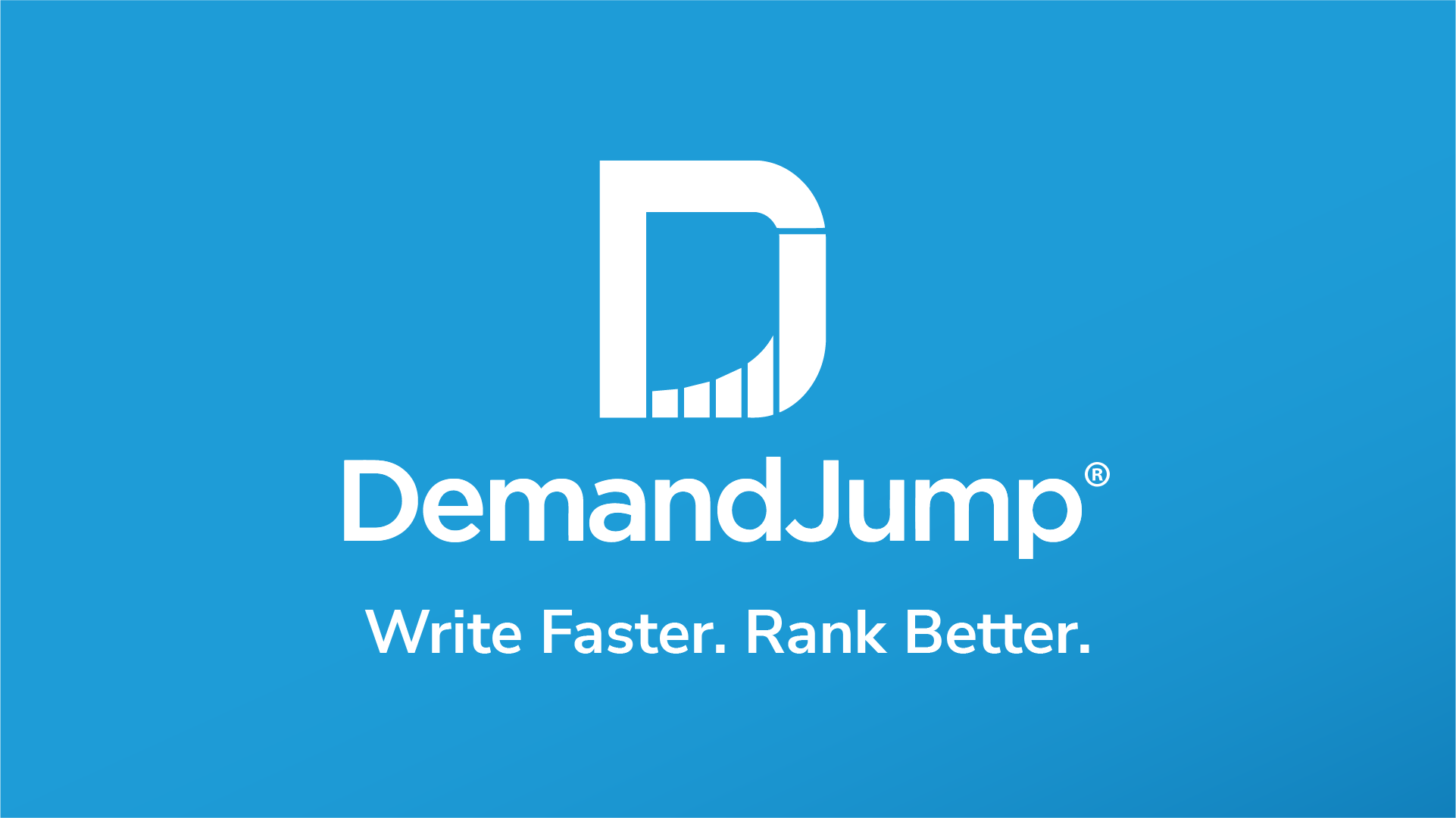See DemandJump in Action
By embracing DemandJump's approach to SEO, we have been able to increase our organic rankings within just 2 weeks of implementing recommendations. This helped us see a 22% increase in organic search month-over-month.
Robert Jacko Vice President Digital Marketing @ Homage
DemandJump has become a crucial extension of our marketing team, providing game changing insights to fuel and propel all aspects of our digital marketing efforts. The DemandJump platform is a must have, we are seriously impressed.
Tim Lavinder Director of Ecommerce @ Hotsox
We used to spend hours looking for insights in dozens of tools and reports. Now we log into one place to find out what customers are doing and how to meet them where it matters most.
Zach Roop Digital Marketing Manager @ Dometic
We use DemandJump recommendations as our digital to-do list. We love going in and seeing the recommendations and knowing what to do next.
JoLynda Wilson Marketing Director @ IWC
Trusted by Brands Around the World
DemandJump Product Suite
Eliminate wasted time and spend. With DemandJump's content, insights, and attribution
you will know with certainty how to win by aligning your marketing to actual consumer behavior.
Content
DemandJump assembles the world’s data, creates networks of customer touchpoints around any topic or keyword, and tells you exactly what content to write, keywords to include, videos to produce, and much more.
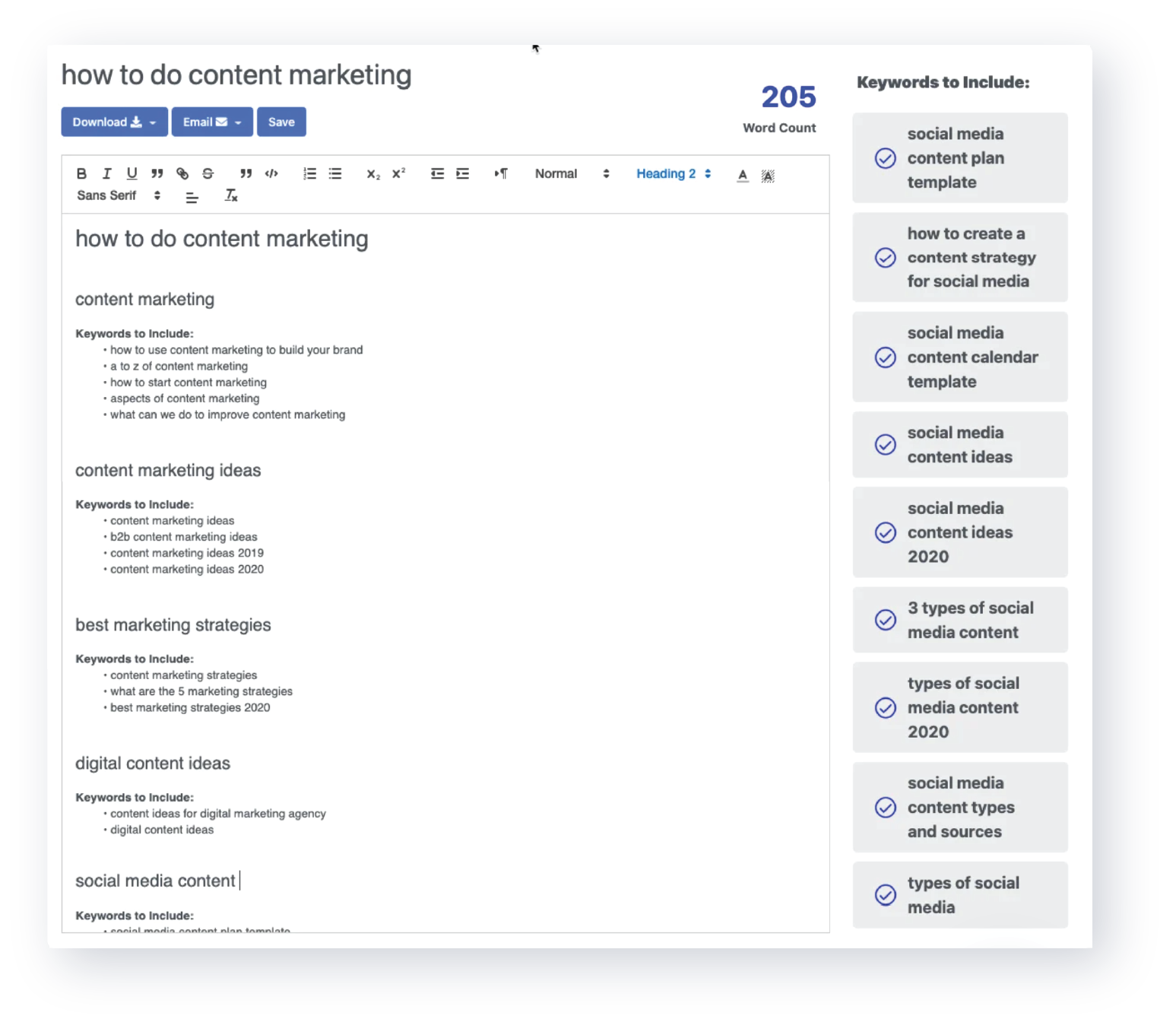
Insights
Find out what your target audience cares about for any category, product, or topic, with the click of a button. Gain market share by aligning your marketing efforts to actual customer behavior.
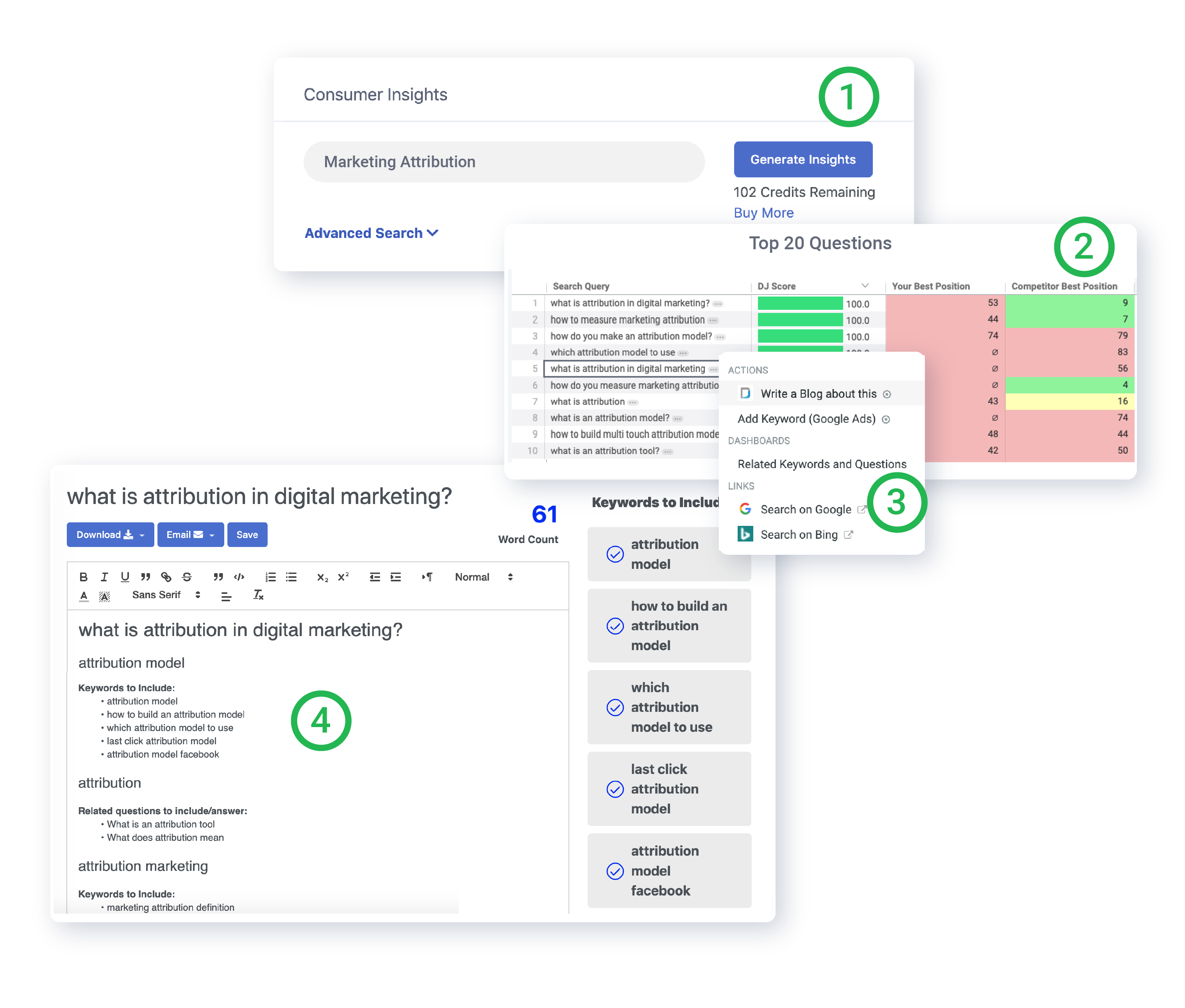
Attribution
Eliminate wasted time and spend. With DemandJump's automated account-based attribution solution you will know with certainty which efforts are driving ROI.
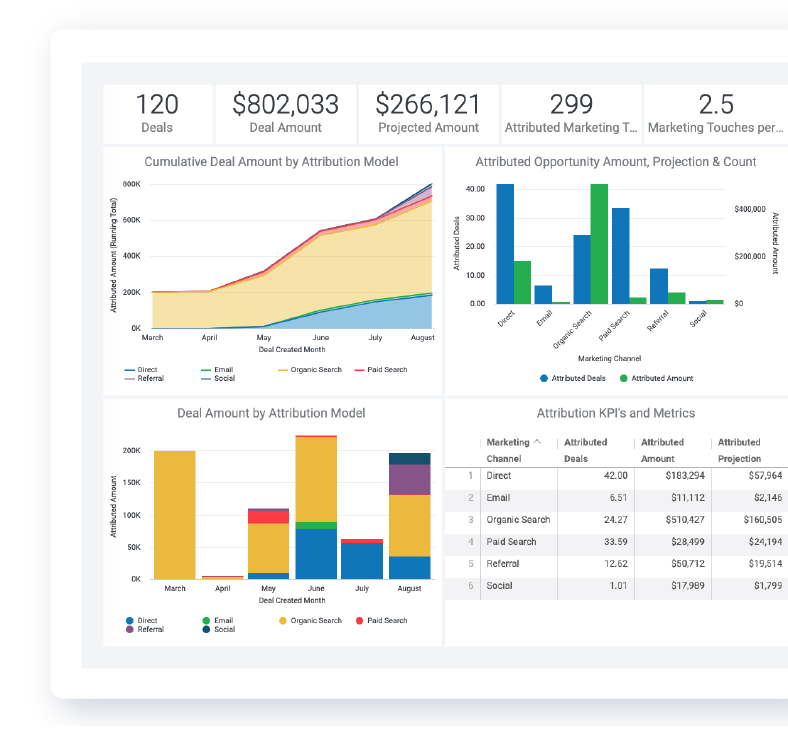
See a Demo of DemandJump
Do you know who your competitors are and what they offer? Monitoring and assessing your competitors is important because it allows you to see and respond to changes in the business landscape while helping you identify gaps in the market and uncover new market trends. Competitor monitoring can also give you insight into new products or services your brand might want to develop and new marketing or sales tactics that resonate with your target audience.
If you really want to get to know the competition, you need to conduct an analysis of your competitors. A competitor analysis in marketing is a strategy where you identify your brand’s main competitors and assess the strengths and weaknesses of their brand, products, sales, and marketing strategies.
A competitor analysis allows you to keep an eye on what similar brands are selling, what value they offer, and how they market to the target audience. In addition to competitor tracking, you can also create a competitor response profile, which allows you to predict what moves your competitors will make in the future based on the insights you’ve gained through research. This information can later help you create your own comprehensive strategy that allows you to improve on what your competitors are doing.
If you have never conducted a competitor analysis or the last analysis you ran is outdated or not detailed enough, it may be time to create a new one. In this guide, we’ll discuss how competitor analysis tools help you discover new insights into the competition. We’ll also dive a little deeper into how you can utilize the information you’ve gathered in your analysis to get ahead of the competition.
Competitor Analysis Framework: Putting Your Analysis Together
As you develop your competitor landscape analysis, there are a number of different competitor analysis tools and frameworks that you can use to gather and organize data that will give you insights into the competitive landscape. Whether you are working with a competitor analysis template or starting from scratch, these tools give you accurate data to work from instead of making conclusions based on your assumptions about competitors.
Market Research Tools
The first thing that you’ll need to do while creating your competitor analysis is get to know your market and industry through market research. Market researchers use a variety of tools to compile information. Here are a few of the free tools that you can get started using today:
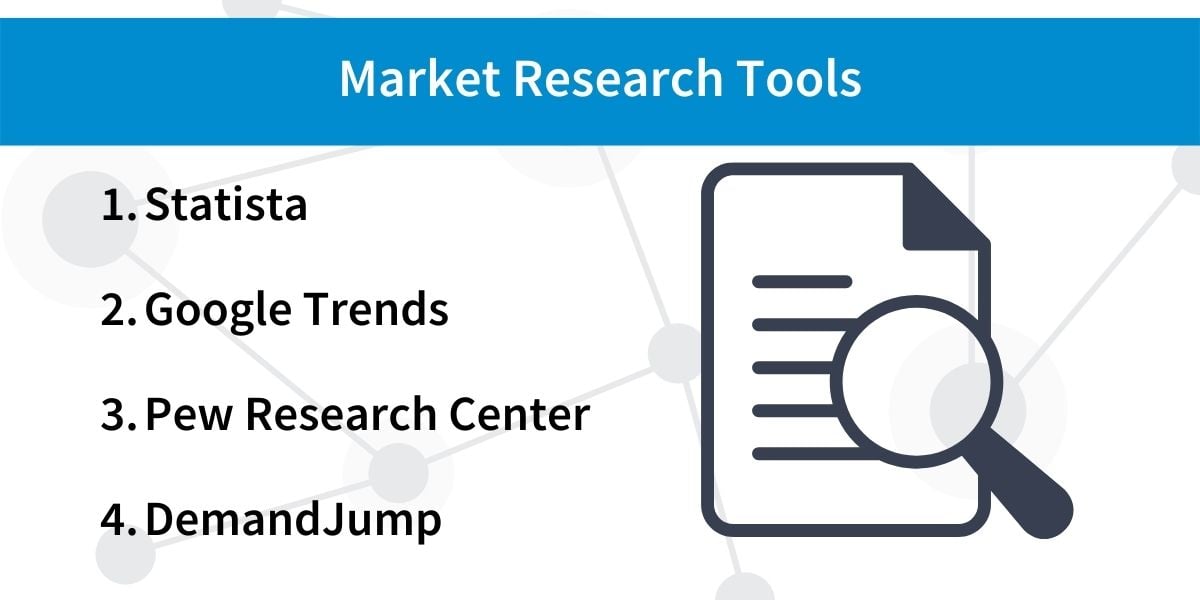
Statista
Statista is an online platform that offers statistics, market research, and business intelligence across industries. This platform provides access to a wealth of data from different market and opinion research institutions, business organizations, and government institutions. You can use this tool as a search engine to find statistics that relate to your market, which you can include in your competitor analysis.
Google Trends
Google Trends is an online search tool that analyzes the popularity of top search queries in Google across the world. This free tool offers real-time data on different topics that are important in your industry. It can also point out the latest trends from around the world that relate to your market.
Pew Research Center
Pew Research Center is a group that provides nonpartisan facts to inform the public about issues, attitudes, and trends around the globe. They conduct public opinion polling as well as demographic research and other data-driven social science research that can be valuable in your analysis of the market.
DemandJump
DemandJump’s market intelligence product takes the guesswork out of marketing by enabling marketers to identify gaps and opportunities in their own marketing strategies. It allows you to easily evaluate the performance of competitors’ efforts and see how they’re driving qualified traffic to their websites.
Compiling Additional Competitor Research
Once you have gotten to know your market and your target consumers, you’re ready to start researching the competition. This will require you to spend some time on your competitors’ websites and social channels. Use the following steps as a guide for getting the information you need.
1. Determine who your competitors are and what they sell.
Most brands will have two types of competition – direct and indirect. Direct competitors are those that offer a product or service that is so similar to yours that it could serve as a substitute. While indirect competitors are businesses that offer products that could satisfy the same customer need but are not the same. You’ll want to focus your analysis on direct competitors as these are the businesses that will be speaking to your target market.
When reviewing your direct competitors’ products or services, make note of both what they sell and the quality of what they sell. Identify their pricing strategies and the processes they use to distribute their products and services.
2. Research your competitors’ sales tactics.
You’ll also want to understand how your competitors sell to their target customers. You can compile your research by answering a few of the following questions:
- What does their sales process look like?
- Which channels are they using to sell?
- Are they expanding or scaling down?
- What is their total sales volume and revenue each year?
- Do they offer discounts? How often?
- What involvement do their sales staff have in the process?
Getting information on your competitors’ sales process isn’t always easy if they are not publicly held companies. One way that you can get this information is to talk to your customers that have considered competitors in the past. Ask them why they chose your product or service over the competitors and get their general impression of competitors that they’ve considered in the past.
3. Research your competitors’ marketing strategies.
One of the best places to start in analyzing your competitors’ marketing strategies is on their website. Take a look at the types of content they use to communicate with leads and customers on their site such as blogs, e-books, videos, webinars, case studies, infographics, presentations, and podcasts. You should also make note of what website pages they have on their main site navigation as this gives you an idea of what they find most important.
A competitor analysis should also include what the competitors are doing outside of their website as well. Are they regularly publishing press releases online or with local publications? Do they run online and offline ad campaigns? This information may be a little harder to track down, but you can start by typing each competitor’s name into the search engine and seeing which articles and ads appear. There are also a number of marketing tools that focus on competitor tracking that can gather this data for you.
4. Review your competitors’ content strategy and engagement.
In reviewing your competitors’ content strategy, go beyond just types of content and frequency. You’ll also want to look for the tone and voice in their content. How in-depth do they get on topics? How readable is their content? What types of content are gated (require an opt-in) and what types are free?
In addition to looking at their content strategy, you should also make note of the level of engagement with this content. Check to see if readers are commenting on blog posts or sharing them to social. This will give you an idea of what topics are popular and what the general response is from readers who may also be in your target market.
5. Analyze their social media strategy.
After you’ve reviewed the content strategy, look at your competitors’ social media presence. Make note of which platforms they are active on and how frequently and consistently they post. What types of content are they posting? Which types of content are the most popular with their fans and followers?
In addition to analyzing social content, make note of engagement activities as well. Record the number of fans or followers each of their accounts has and check to see how often followers are engaging with the content. Do your competitors use contests and giveaways to engage their audience? How do your competitors respond to follower comments?
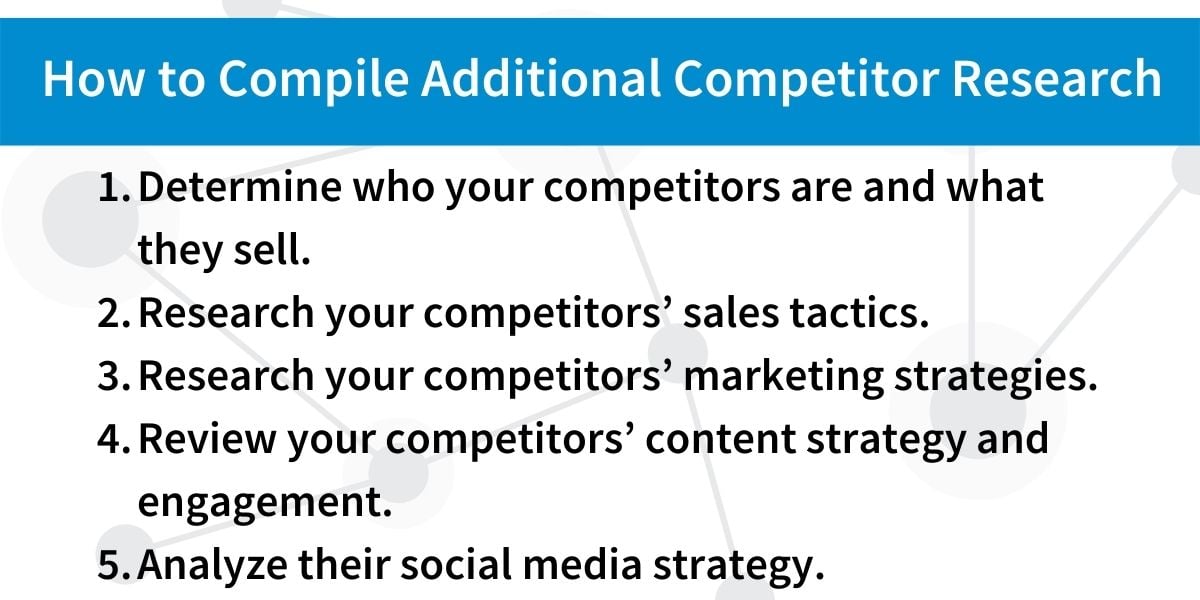
Competitor Analysis Frameworks
Once you have gathered data, you will need a way to organize this information so that you can gain insights that will help you better compete in the marketplace. A competitor analysis framework is a model that you can use to help you understand the data you’ve collected so that you can start taking action to make your brand more competitive. Use the competitor analysis models below to make sense of the competitor data you’ve gathered.
SWOT Analysis
The SWOT analysis is a competitive analysis framework that is often used to help brands understand their own competitive advantage by detailing their Strengths, Weaknesses, Opportunities, and Threats. As one of the most popular competitive analysis models, the SWOT analysis looks at internal and external factors that may impact your brand.
You can use this model to compare your brand’s strengths and weaknesses to those of your competitors. This will give you some insight into where you can improve and what strategies you may need to use to stay competitive.
Strategic Group Analysis
The Strategic Group Analysis allows you to analyze different organizations in clusters based on similarities in strategies. By identifying which cluster your brand fits into for any given strategy, you can get a better sense of the impact of each strategy on the market. This also allows you to see which brands your business is closely competing with.
This model is helpful when you are curious about the impact of a particular business strategy. For instance, let’s say you want to understand how paid search impacts reach. You might make clusters of your competitors based on their reliance on paid search and what their reach is. When you build a strategic group analysis for different strategies, it helps you understand which strategies are driving success while helping you position your brand within the competitive landscape.
Growth Share Matrix
The Growth Share Matrix classifies a brand’s products or services against the competitive landscape of the industry. This model helps brands decide which products and services to invest in based on the level of competition and market interest. It can also help you find your replacement competitor, or the brand that offers products your audience sees as suitable replacements to yours.
Each product falls into one of four quadrants in the matrix:
- Question marks – High growth and low market share, these are typically new products that could have potential.
- Stars – These products are likely to achieve high growth and high market share.
- Cash Cows – These products have low growth but high market share.
- Pets – These products are considered failures with low growth and low market share.
Competitive Landscape Analysis Breakdown
Now that you know how competitor analysis tools and frameworks will help you gather and organize data for competition analysis, let’s discuss what to do with this information once you’ve compiled it. The goal of a competitive analysis in marketing is to help your brand make actionable changes to your business based on the data and insights you’ve gained on your competitors.

Adjusting Your Marketing and SEO Strategy
Using the insights that you’ve gained during your competitor analysis, you can make more informed decisions about your marketing and SEO strategy. Consider which marketing strategies your competitors use that resonate with your audience. What marketing tools and tactics can you also implement to market your products? Start by slowly testing some of these tactics to see which help you improve conversions and engagements.
You can also borrow from your competitors’ SEO strategy. What keywords do your competitors target? Which do they rank for? Look for opportunities to improve your own search engine marketing strategy by using SEO tools that help you keep an eye on your competitors while also allowing you to strengthen your own search engine ranking.
Creating a Competitor Response Profile
Another way that you can utilize the data and insights you’ve gathered on competitors is by creating a competitor response profile. A competitor response profile helps you understand what moves your competitor might make in the future based on the insights you’ve gained on their current strategy and market placement.
The competitor response profile uses drivers (future goals and critical assumptions) and abilities (current strategy and capabilities) to make predictions about a competitor’s satisfaction with current market share, vulnerabilities, sensitive spots, and likely next moves. By understanding what motivates your competitors and what they are able to do in response to these motivations, you can anticipate future actions, which helps you stay competitive in the marketplace.
Resources
Channel Optimization
Consumer Behavior
Consumer Insights
Consumer Insights and Analytics
Competitor Analysis Tools
Content Marketing
Content Strategy
Cross-Channel Analytics
Customer Insight Research Techniques
Customer Journey Map
Market Intelligence
Marketing Analytics Techniques
Market Research
Marketing Attribution
Opportunities of Internet Marketing
Types of Consumer Insights




